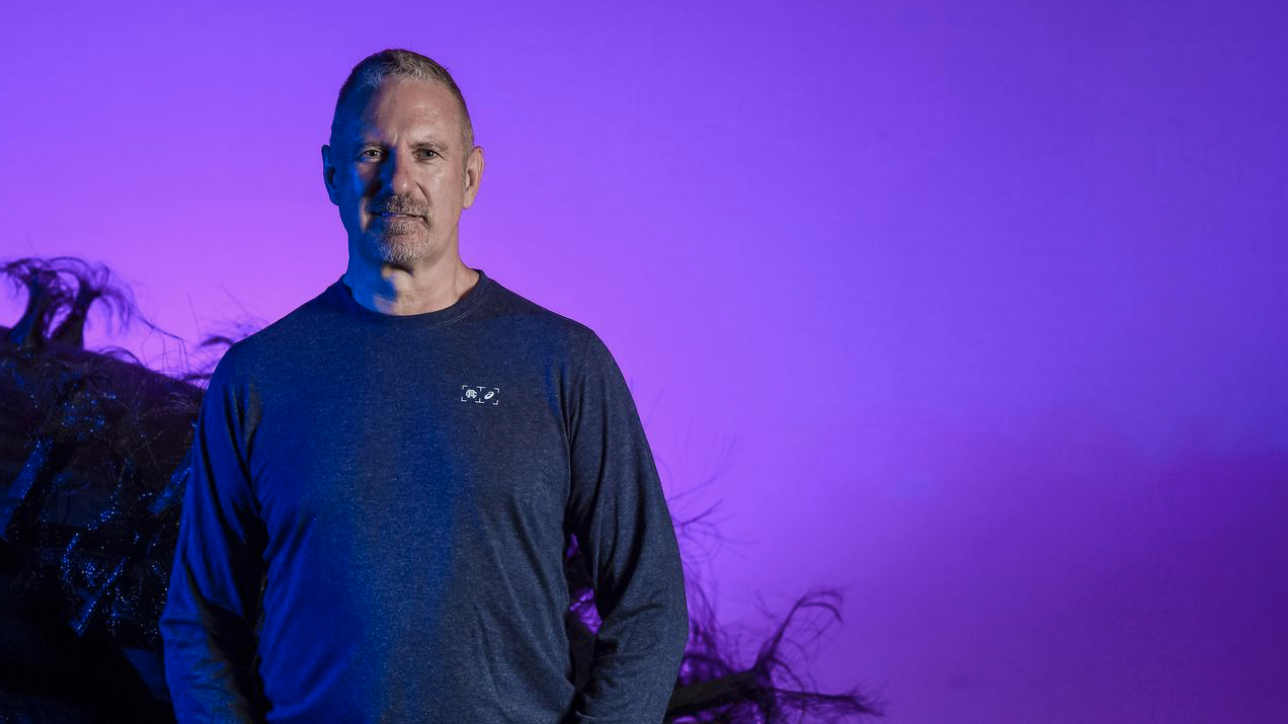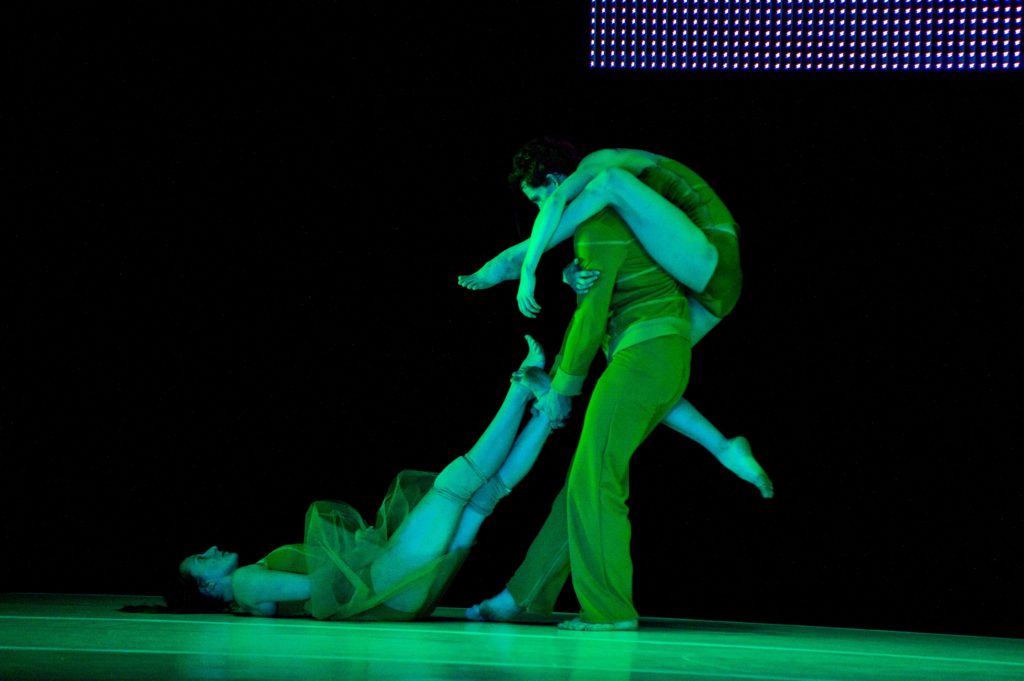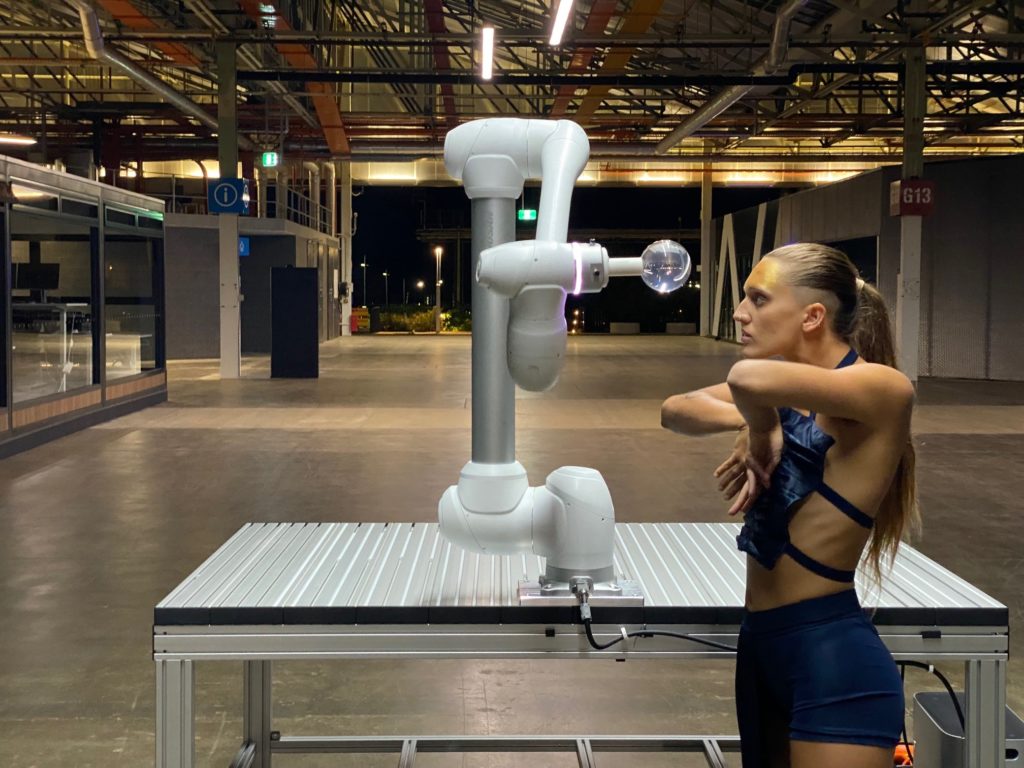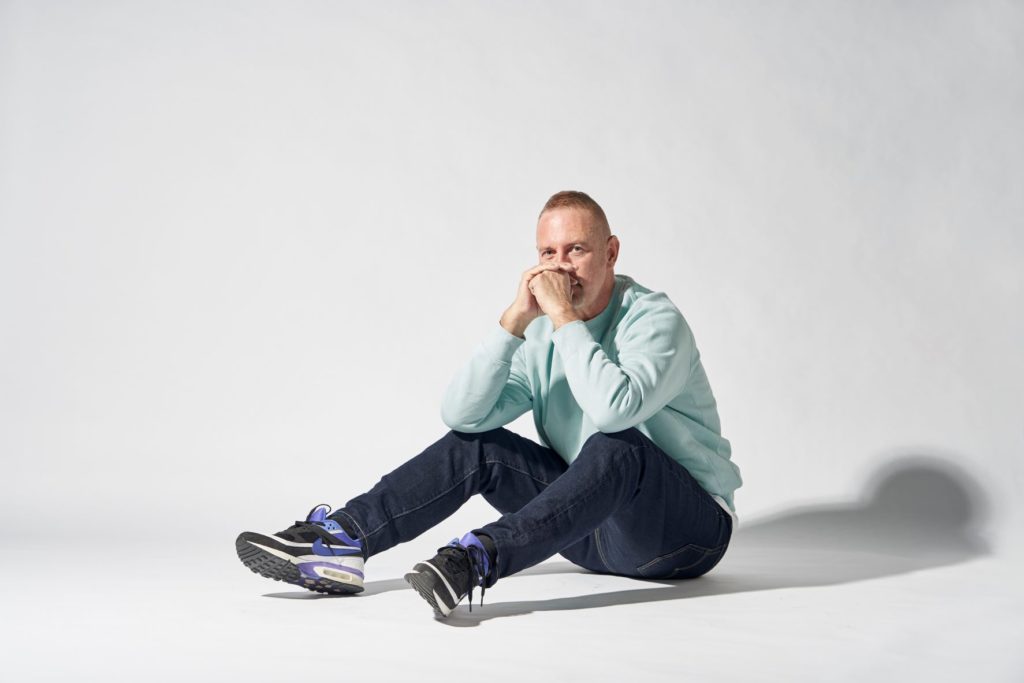
2021 was a great year for choreographer Garry Stewart. Not only did he win the Premier’s Lifetime Achievement award at the Ruby Awards, but he was also listed in the latest edition of the Routledge’s Fifty Contemporary Choreographers, a compendium of the world’s leading contemporary dance choreographers.
After 22 years as the Artistic Director of the Australian Dance Theatre (ADT), Garry departed from his creative role at the end of 2021 to focus on his research-driven position as the Director of Flinders University’s Assemblage Centre for Creative Arts. Looking back onto an extensive list of highly successful productions, Garry wanted his last work at the ADT to be an established piece and chose a favourite: ‘G’, a deconstruction of the well-known classical ballet Giselle. “It was satisfying to finish with something quite solid. I have a great fondness for this piece. It has been worked and reworked over a number of rehearsal periods”, Garry tells us. Performed over 100 times throughout Europe and Australia, G was co-commissioned by Théâtre de la Ville in Paris, the Southbank Centre in London, and the Joyce Theatre in New York, confirming the international reputation of the dance company.
Offering a very deconstructed narrative with disparate threads drawn together from the social context that existed at the time of the making of the work, 1830, and general elements of the culture of classical ballet, G is quite an ironic take on Giselle. When adapting the original, Garry was especially influenced by the essay ‘Giselle – madness and death’, written by Professor Steven Wainwright from King’s College in London, that investigates the intersection of classical ballet with philosophy and cultural theory.
“The classical ballet Giselle was created in the 1830s when psychiatry was in the early stages of becoming a profession. Thousands of women were classified as having the condition of hysteria – which could encompass everything from being too sexually frigid or, conversely, too liberated to being too creative or unruly and outspoken – and were consequently hospitalised, often against their will. Concurrently at the time, women were also often portrayed as ethereal, otherworldly beings in theatre and ballet, inspired by German and Russian medieval folk stories.”
Garry took this rich base material and created a work that delves into hysteria, but also examines gender codes in classical ballet. “In G everyone becomes infected with this hysteria which impacts the entire cast somewhat like the community dancing manias which took place in medieval Europe. In classical ballet, the technology of pointe shoes is often used to allow female dancers to glide across the stage, enhancing the sense that they are ethereal, otherworldly beings. I took that physical gesture and created a central motif out of it so the dancers incessantly cross the stage from stage right to stage left throughout the entire 60 minute performance. I employed this as a metaphor for being trapped in a cycle of fate they can’t escape.” As expected, his last work was received phenomenally.

Exploring Assemblage’s potential
Garry has since immersed himself fully into further establishing Flinders’ Centre for Creative Arts whose aim is to connect the university and the College of Humanities, Arts and Social Sciences (HASS) with other centres and institutes around the world and nationally as well as across to other colleges and industry.
After leaving ADT, Garry is now super excited for all that is to come and can’t wait to apply his experience. “I feel like 22 years at ADT is a pretty solid innings so I’m more excited than anything about opening myself up to other possibilities that might manifest through closing one door and allowing other doors to open. In this role, it’s certainly not about my work, it’s about creating the conditions for other people to create innovative, unexpected research and expand their creative arts practice with substantial focus on interdisciplinarity.”
The role appealed to Garry’s interest and desire for a deeper excavation of knowledge in creating his own artistic works. He saw the potential of connecting with extraordinary people working in various art forms, not just in dance, and the conversations and projects that would evolve as a result. Describing his research as subjective and interpretive, Garry likes conducting it with a team of experts to bounce ideas off each other.
“I often work with a dramaturg which is a role that has fairly recently migrated from theatre into the realm of dance. Back in the late 1990s, I was one of the first Australian choreographers to bring this role into dance-making. Typically, dramaturgs assist in researching the philosophical concerns of the work as well as contributing to organising flows of meaning and translating the discursive into the embodied. The director and dramaturg will create a shared space in which to interrogate the problems and potentialities of the work. This is an enormously complex and granular process occupying many months.
“I also often collaborate with experts from other fields such as architecture, biology, physics, robotics and so forth. It’s valuable to be influenced by alternate areas of thinking and their convergent schemas and frameworks. This can force me to approach the body, space, temporality and the materials of staging in ways that confront and reshape my creative habits and practised modalities of making.”
Having already established the International Centre for Choreography for which he received a Churchill fellowship, Garry wanted to continue down that trajectory and was looking to set up structures to enable and facilitate other people’s creative research.
“Gaining a clearer understanding of non-traditional research outputs, which is something that I was already doing intuitively, has been very helpful. In all the works I’ve made for ADT, there has always been an underpinning of research so Assemblage felt like a natural fit. When this role came up and I had an inkling that I would move on from ADT at some point, I was really fascinated by the potential that my role at Flinders offers. Identifying opportunities for research to be elevated and amplified while stimulating multidisciplinary and interdisciplinary thinking is something I feel is engendered in my own practice.”

Assemblage research projects
Garry has a long list of projects he wants to undertake himself. The first of which involves collaborative robots, so-called cobots, and is the next step from his previous robotics work, Devolution. “In 2006 I collaborated with Louis-Phillippe Demers, who’s a French-Canadian roboticist and was working out of ZKM in Karlsruhe/Germany, on a massive robotics and dance project which at the time was possibly the biggest of its kind in the world. A huge undertaking. It premiered at Adelaide Festival before touring to Sydney then Paris as well as other centres in Europe. It involved 30 large and medium scale robotic structures, including prosthetics attached to the body and explored ecosystem processes, such as mutualism, commensalism, parasitism, territoriality and senescence. We observed two ‘species’ colliding – the human body and these metallic structures, exoskeletons – manifesting a unique world.”
The aim of Garry’s new project ‘Degrees of Movement’ is to recontextualise the machine through an aesthetic framing and discover how cobots work in confluence with dance and the human body by using aestheticised, non-utilitarian movement, which is dance, rather than functional movement which the robots were originally designed for. Over the course of 10 days, Garry experimented with six dancers and four different cobots as well as their programmers at the Main Assembly Building (MAB) at Flinders’ Tonsley campus.
“The robots over at Tonsley are very different to the robots that I worked with previously. Devolution was very much a project emanating out of creative robotics resulting in bespoke robotic forms, whereas at Flinders, I’m working with cobots – collaborative manufacturing robots made solely for manufacturing purposes. Rather than conventional robots that we see in, say, car manufacturing factories that are really fast and potentially dangerous, cobots move much slower and not just in rectilineal planes, but they can move in arcs and curves, similar to the human body. There’s a fluidity to their movement, a quality that lends itself to dance quite readily.”
Flinders newly founded Arts in Health Alliance provides the basis for many further projects that Assemblage will be involved in. The College of Humanities, Arts and Social Sciences and the College of Nursing and Health Sciences have jointly funded five new projects. Garry is leading two Arts in Health projects in 2022.
The first project builds on Garry’s previous work with technology. This project, titled ‘Proximity Clinical’, employs a technology that Garry created with French video engineer Thomas Pachoud for a former stage production titled ‘Proximity’. This interactive video technology was then further developed for clinical research by Garry and Thomas along with Professor Susan Hiller (UniSA) for patients in rehabilitation from strokes, aneurysms and other acquired neurological damage. When first creating the technology for the performance Proximity, Garry researched how the brain maps out the world around us by incorporating objects in our vicinity into our body schema. Learning about these neurological body maps prompted Garry to wonder whether seeing oneself through video interactions could benefit people who had suffered strokes or other neurological damage.
“Initially I collaborated with Professor Ian Gibbins, a specialist in anatomy and histology at Flinders’ College of Medicine and Public Health, and then later with Susan Hillier, a professor at Uni SA who is a neuroscientist developing innovation in rehabilitation methodologies. Together we tested the technology with a number of patients at Hampstead Rehabilitation Centre some years ago but didn’t take it any further due to lack of funding. When the Flinders Arts and Health Alliance commenced and grants became available, we applied to reinvigorate that project.”
Together with animation studio Monkeystack, Garry is now redeveloping his technology to incorporate new ways of capturing movement and to develop a simple, portable plug and play system. Once completed, trials at the Flinders Medical Centre and their rehab unit will commence and Garry is super excited to use Proximity Clinical which incorporates play, novelty and invention into the rehabilitation process that can often be a tedious and confronting journey for patients.
The second project within the Arts in Health Alliance has just received a $200,000 grant from the Life Support Authority. Over the next 12 months, Garry and Professor Maria Crotty from the College of Medicine and Public Health will explore the role of dance in the rehabilitation process of people who have suffered strokes. For many years dance has played an integral role in Parkinson’s rehabilitation but not many studies have looked at whether dance reignites proprioception and reawakens damaged nerves and tissue after a stroke. Garry hopes to engender a sense of self-esteem and wellbeing through movement in the patients.
“In this project, we will be using dancers to collaborate with stroke patients in invigorating movement skills and motor coordination. Dancers possess a phenomenal understanding of their own bodies and have an advanced degree of proprioception – knowing where their body is in space – much more so than non-dancers. They are also highly articulate about the body and its relationship to movement as well as have an ability to tune into subtle bodily sensations. So, it makes sense to work with dancers with elevated and advanced coordination, body awareness and a deep understanding of their own body schema in order to lend support to those people who are experiencing a compromised relationship to movement.”

Stay tuned for updates on Assemblage’s projects in 2022
Many more projects are in the pipeline for Assemblage’s researchers this year and at Flinders, we are looking forward to seeing the outcomes of all the innovative creative studies. Garry especially loves that Flinders’ HASS College places so much value on practice which is demonstrated by the value put on non-traditional research outputs within the College. Having completed a creative research Masters himself, looking at phenomenology – the study of an individual’s lived experience of the world – and the expression of emotions through video installation at the College of Fine Arts at the University of New South Wales, it was this kind of research that was especially attractive to him.
“What I loved about coming to the university was seeing the value of practice as research and realising that most of the people I’d be working with are practising artists, or if they’re not practising artists, they’re very close to practising artists. Creativity and inquiry, whether in a dance company or the university, are much the same thing. Soon after arriving at Flinders, I realised that yes, these are my people! They’re artists. We have a shared understanding of the world through the fundamental desire to create, to discover, to take risks and stand in discomfort while investigating and uncovering something new in the sometimes messy process of creation. I’m very familiar with that fundamental desire and motivation. That is the centre of all we are doing here at Assemblage.”

